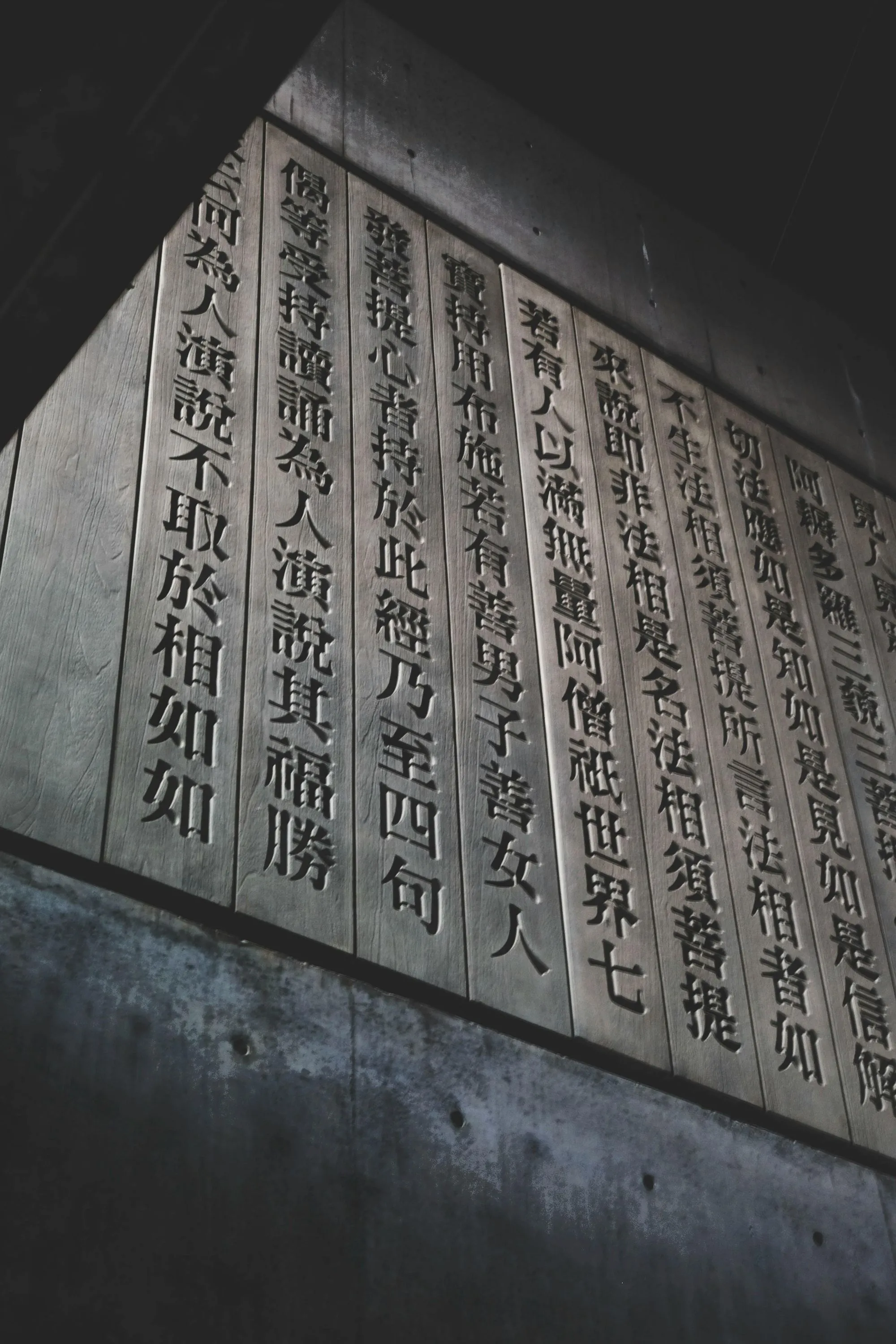Introduction
Unlock the potential of your brain with the fascinating task of Chinese character memorization. As an aspiring Mandarin learner, you're likely aware that one of the most challenging aspects of mastering the language is learning to read and write Chinese characters. However, equipping yourself with effective memorization techniques can transform this seemingly daunting task into an engaging cognitive exercise.
With over 50,000 characters in the Chinese language, traditional rote learning methods can be overwhelming and inefficient. The key to efficient learning lies in understanding the structure of these characters, breaking them down into manageable parts, and using mnemonic techniques to form lasting memories.
In this comprehensive guide, we'll explore scientifically-backed techniques to memorize Chinese characters efficiently and effectively. From understanding the basics of radicals and components to utilizing technology such as learning apps and platforms like Mandarin Blueprint, this guide aims to equip you with strategies to make your Chinese learning journey enjoyable and successful.
Let's delve into the world of Chinese characters and explore the wonders of your brain’s memorization capabilities.
Understanding the Basics of Chinese Characters
Do you remember the childhood thrill of discovering secret codes and ciphers? Understanding Chinese characters can evoke a similar sense of wonder and satisfaction. As you break down the intricacies of these characters, you're not only learning a language, but also unraveling a rich tapestry of culture and history. Let's start the decoding process with a deep dive into the basics of Chinese characters.
The Importance of Radicals in Chinese Characters
Radicals, or "bushou", act as the linchpin of Chinese characters, offering valuable clues to their meaning. Think of radicals as the roots of a tree, grounding each character in a specific semantic realm. For instance, the character "休" (to rest) contains the radicals "人" (person) and "木" (tree), painting a vivid picture of a person resting under a tree.
These essential building blocks can help you discern patterns and connections between characters, greatly enhancing your memorization and comprehension. Moreover, the knowledge of radicals can be a lifesaver when you're faced with unfamiliar characters in a dictionary.
The Role of Components in Chinese Characters
Along with radicals, another key player in the Chinese character narrative is the components. Components often provide a phonetic guide to pronunciation, which is crucial, especially for beginners. As you accumulate a repertoire of characters, you'll find yourself 'guessing' the pronunciation of a new character with surprising accuracy.
For example, the character 楼 (lóu), meaning "building", incorporates the radical 木 (mù), meaning "wood", as a component. This gives a hint to the character's meaning, demonstrating how components and radicals work in tandem to unfold the story behind each Chinese character.
The Significance of Stroke Order in Chinese Characters
The stroke order, or the sequence in which the lines of a Chinese character are written, is another fundamental aspect of Chinese character learning. It might seem tempting to overlook this aspect, but investing time to learn the correct stroke order pays rich dividends in the long run.
Following the stroke order not only helps in writing the characters neatly and consistently, but it also aids in character recognition – a key skill when reading Chinese texts. Plus, it can be a fun challenge, turning the writing process into an engaging game that fights boredom and enhances your learning experience.
In the next section, we'll delve into various techniques for memorizing Chinese characters, equipping you with the tools you need to take your Mandarin learning to the next level.

Techniques for Memorizing Chinese Characters
Unlocking the intricate world of Chinese characters doesn't have to be a daunting task. By employing effective memorization techniques, you can turn what might seem like a monumental challenge into an engaging learning journey. Here are some of the most effective strategies.
Breaking Down Characters into Radicals and Components
Peeling back the layers of a Chinese character and understanding its structure can be a game-changer in your learning journey. Each character often consists of basic components known as "radicals". These radicals can provide phonetic or semantic clues and combine to create more complex characters. For instance, the radical 木 (mù) represents wood, offering a clue to the meaning of characters that contain it. By breaking down characters into their individual components, you can gain insights into their meanings, making them easier to memorize and recall.
Creating Visualizations to Remember Characters
Human brains are wired to remember images better than abstract characters. So why not leverage this to your advantage? Mnemonics can be a powerful tool for learning Chinese characters. These memory aids can help you associate characters with vivid, memorable images or concepts. For example, you could visualize the character 木 (mù) as a tree, strengthening your memory of the character and its meaning.
Using Pinyin in Memorization Techniques
Pinyin is the official romanization system for transcribing the Mandarin pronunciations of Chinese characters. Including pinyin in your learning process can help you remember not just the meaning of a character, but also how it's pronounced. While pinyin is a helpful tool, remember to use it as a guide and not a substitute for learning the actual characters.
Associating Tones with Moods or Colors
Mandarin Chinese is a tonal language, meaning that the pitch contour of a syllable can change the meaning of a word. By associating different tones with moods or colors, you can create an additional memory hook to help you remember Chinese characters and their pronunciations.
Building on Familiar Characters
Did you know that many Chinese characters contain elements of other, simpler characters? By identifying these familiar components within more complex characters, you can leverage your existing knowledge to learn new characters more efficiently.
Practicing Mnemonic Techniques with New Characters
As with any new skill, practice is key when it comes to mastering Chinese characters. Regularly reviewing characters you've learned, using flashcards, and reading Mandarin texts can all help reinforce your memory and improve your recall. Remember, learning Chinese characters is a journey, not a destination. Stay patient, keep practicing, and you'll see progress in your Mandarin skills.
By applying these memorization techniques, you'll be well on your way to mastering Chinese characters. But don't stop there. In the next section, we'll explore how consistent practice and leveraging technology can further boost your Chinese character learning journey.
The Role of Practice in Memorizing Chinese Characters
There’s an old Chinese proverb that says, “熟能生巧” (shú néng shēng qiǎo), which translates to "practice makes perfect." This is especially true when it comes to learning Chinese characters. The more you practice, the more you'll become familiar with the intricacies of each character, and the more likely they'll be ingrained in your memory.
The Importance of Handwriting Characters
Learning to write Chinese characters by hand is a crucial part of the memorization process. While typing Chinese characters on digital devices can be convenient, it doesn't provide the same cognitive benefits as physically writing them down. Writing Chinese characters by hand engages your brain, improves recall, and deepens your understanding of each character's structure and meaning.
Using traditional pen and paper to practice writing characters can also be a highly effective way to learn stroke order. This is important because the order in which the strokes of a Chinese character are written can sometimes impact the character's overall appearance and legibility.
So, the next time you practice, consider ditching the digital keyboard and picking up a pencil instead. After all, there's no shortcut to mastering Chinese handwriting.
The Value of Reading Chinese Texts
Reading is another powerful way to reinforce your memory of Chinese characters. When you immerse yourself in Chinese literature or texts, you expose yourself to a multitude of characters in various contexts. This exposure helps you understand how characters are used in sentences and how they interact with each other to form meaning.
Regular reading also allows you to see characters used in a real-world setting, making the learning process more authentic and engaging. Whether it's a short story, a poem, or a news article, reading Chinese texts can significantly improve your character recognition and comprehension skills.
The Benefit of Watching Chinese Videos with Subtitles
Finally, complement your reading and writing practice by watching videos in Mandarin with subtitles. This can be a fun and interactive way to see characters in action.
When you watch a video, you get to hear the pronunciation, see the character, and observe it in the context of a sentence—all at the same time. This multisensory approach to learning can provide a more holistic understanding of the language. So, whether it's a movie, a TV show, or a short clip on a learning platform like Mandarin Blueprint, make sure to take advantage of available subtitles.
Remember, learning Chinese characters is not a sprint; it's a marathon. Stay consistent in your practice, stay curious, and most importantly, enjoy the journey.

Utilizing Technology for Chinese Character Memorization
Step into the 21st century of language learning and let technology fuel your Mandarin learning journey. From innovative learning apps to interactive websites, the digital world is ripe with tools that can supercharge your Chinese character memorization efforts.
The Advantages of Using Learning Apps
Learning apps have transformed the way we approach language learning. No longer confined to textbooks and classrooms, these apps allow learners to study whenever and wherever they wish. Apps like Pleco, Chineasy, and Quizlet have been praised by Mandarin learners for their interactive and engaging approach to Chinese character memorization. These apps often incorporate smart flashcards, stroke order enforcement, and even gamified lessons that can significantly enhance your Mandarin language skills.
The Effectiveness of Websites for Memorization
Pair your app usage with effective websites for a full-fledged Mandarin learning experience. Websites like Pandanese employ innovative and fun methods for learning characters. These sites often use the power of stories and bizarre mental connections, a concept that's been key to remembering Chinese characters for many learners. The immersive nature of these websites can make the memorization process enjoyable and less daunting.
The Convenience of Importing Anki Decks into Traverse
For those already familiar with Anki, a flashcard app that follows the spaced repetition system, you'll be thrilled by the convenience of importing your Anki decks into Traverse. This feature ensures a seamless transition from your old study material to your new learning environment. By leveraging Traverse's mind mapping and note-taking features alongside your Anki decks, you create a powerful and effective process for mastering Chinese characters.
Embrace the digital era of language learning and let these tools guide you towards Mandarin mastery. Remember, the key to unlocking your brainpower and mastering Chinese characters lies in using a combination of effective strategies, regular practice, and the right technological tools.
How Traverse and Mandarin Blueprint Can Help in Memorizing Chinese Characters
Unleash your brain's potential with the help of Traverse and Mandarin Blueprint, two innovative platforms designed to enhance your Mandarin learning journey. As a Mandarin learner, you'll appreciate the science-backed methods these platforms use to help you memorize Chinese characters, and you'll value the efficiency they bring to your learning routine.
The Features of Traverse that Aid in Memorization
Traverse brings together the power of mind mapping, spaced repetition flashcards, and connected note-taking, providing a comprehensive and effective learning tool for Mandarin learners. The ability to import Anki decks into Traverse ensures that your previous learning efforts are not wasted and can be continued seamlessly. Traverse's advanced features such as mind mapping and note-taking are designed to reinforce your understanding and memorization of Chinese characters.
Moreover, Traverse's integrated spaced repetition flashcards can significantly boost your Mandarin skills. Spaced repetition is a learning technique that involves increasing intervals of time between subsequent reviews of previously learned material, promoting a more efficient and long-lasting memorization process. This method has been scientifically proven to enhance language learning, making it a key feature in Traverse's Mandarin learning tools.
The Partnership between Traverse and Mandarin Blueprint
To further optimize your learning experience, Traverse has formed a partnership with Mandarin Blueprint, an online Chinese course focusing on character learning and immersion learning. Mandarin Blueprint uses a unique approach that combines mnemonic techniques, storytelling, and video lessons to make learning Chinese characters fun and engaging.
The dynamic partnership between Traverse and Mandarin Blueprint allows you to easily import your Mandarin Blueprint flashcards into Traverse, further enhancing your learning experience. This combination leverages the strengths of both platforms, providing you with a comprehensive, engaging, and effective learning experience.
With these tools at your disposal, mastering Chinese characters is not only achievable but also enjoyable. Remember, learning is not a sprint; it's a marathon. With the right mindset, strategies, and tools, you'll find that this journey is not only achievable but also incredibly rewarding.
Conclusion
Embrace the challenge of learning Chinese characters with the confidence that you possess the techniques and tools to unlock your brainpower and master the language. The journey of mastering these intricate characters is not just about language acquisition; it's about unlocking a deeper understanding of Chinese culture, expanding your cognitive abilities, and gaining a sense of accomplishment that comes with learning one of the world's most ancient and beautiful languages.
Implement the science-backed strategies discussed in this article, such as breaking down characters into radicals and components, creating visualizations, associating tones with moods or colors, and practicing mnemonic techniques. Emphasize practice through handwriting, reading Chinese texts, and watching Chinese videos with subtitles. Leverage technology to your advantage by using learning apps, websites, and importing Anki decks into Traverse.
Don't forget to explore the compelling features of Mandarin Blueprint which, when paired with Traverse's memorization techniques, provide a powerful combination for mastering Chinese characters. Your commitment to regular and persistent practice, complemented by effective memorization techniques and modern technology, will transform the daunting task of learning Chinese characters into an enjoyable and rewarding experience.
As you venture on this exciting learning journey, remember the words of Lao Tzu, "A journey of a thousand miles begins with a single step." With each character you memorize, you are taking a step closer towards unlocking your brainpower and achieving your goal of mastering Chinese characters. So, take that step today and unlock the incredible world of Chinese language and culture.

